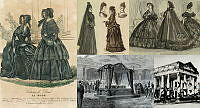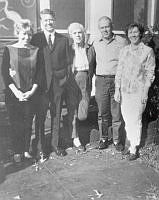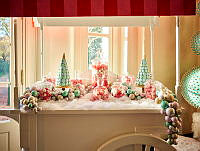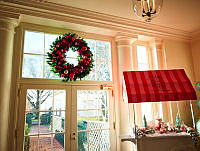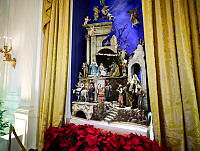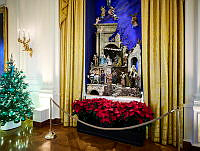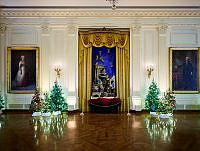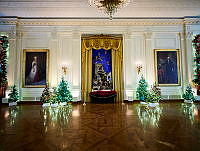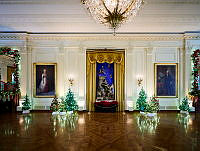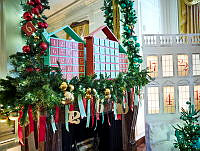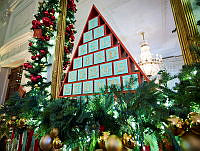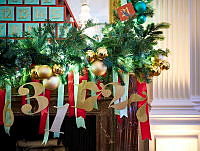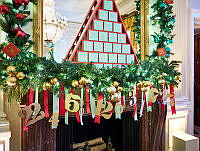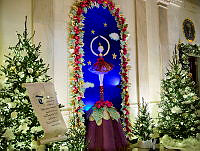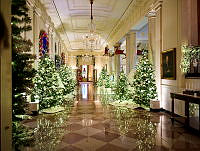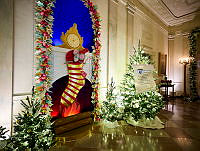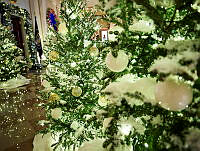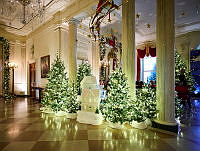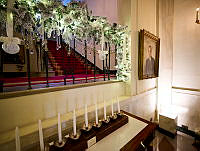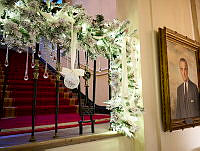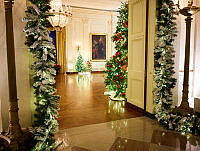
Treasures of the White House: Rocky Mountain Landscape
981.1468.1
When Albert Bierstadt painted Rocky Mountain Landscape in 1870, he had not seen the Rockies for seven years. He worked from studies made in 1863, during his second trip to the West. He had recently returned from a triumphal two-year tour of Europe; the following year he would go west again.
Bierstadt's dramatic sense was keen, and he was a master at the creative transformation of a few basic compositions. He adopted devices associated with the theater: The contrast of the darkened proscenium and wings with the light-struck sky and water enhances the scene. The eye moves into the space by diagonal steps, from the family of deer (the only animate objects in the painting) just right of center, to the stand of trees, to the right distance, and to the soaring cathedral rock across the water. Finally, the most distant snow-covered peaks are seen at top left center. Against this Bierstadt develops a curvilinear play in the cuplike curves of rocks and lakeshore. With the clarity and spatial penetration of a stereographic view (his use of photography is well documented), he rivets our gaze. The innumerable oil sketches from which he composed his large canvases are typified by the brisk cloud study reproduced above. It is alive with the exhilaration of on-the-spot observation.
In Rocky Mountain Landscape the shopworn adjectives "spellbinding" and "breathtaking" regain their identity, conveying the awestruck wonder the artist induces in the viewer. Both words imply the suspension of time. The cascades suggest neither sound nor motion; the great cloudbanks are stopped in their ascent; the still water of the lake mirrors the rocks and locks them to the foreground shore through the complex and beautiful pattern of reflections.
We dare not move lest we lose the waking dream. No humans are present except ourselves; we have stumbled upon a hidden valley. The disposition of light and shadow furthers this illusion. Around a core of light the artist has wrapped a dark cloak, sealing off this extraordinary place from the civilized world.
Source: William Kloss, et. al., Art in the White House, New York: Abrams, 1992.
Signed and dated lower right A Bierstadt / 70 [AB in monogram]
- Artist
- Albert Bierstadt (1830–1902)
- Medium
- Oil on canvas, 36 5/8 x 54 3/4 inches (93 x 139.1 cm)
- Credit
- Gift of The Barra Foundation, Inc., 1981











